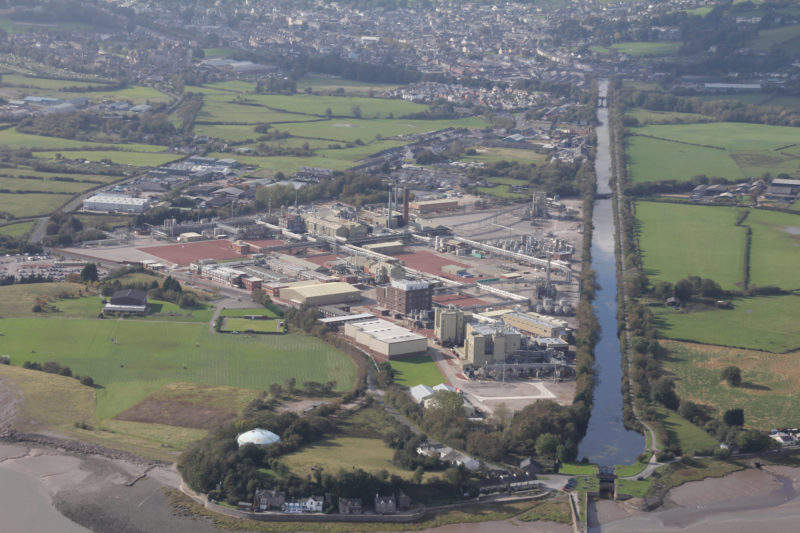
Pharmaceutical manufacturing is a profitable business – whether it’s the production of active pharmaceutical ingredients (APIs) or finished pharmaceutical products (FPPs), small molecule drugs or the industry’s most complex biological medicines. As well as providing economic benefits to the countries in which the manufacturing takes place, high-quality local production can also result in improved public health.
It’s an issue many countries have pushed to the top of their agenda in recent years, with varying priorities depending on the maturity of their pharmaceutical sectors. For example, while the likes of Sri Lanka and the United Arab Emirates (UAE) are only at the beginning of their journey to create pharmaceutical manufacturing hubs, China and Kenya, already leaders in their regions, are focused on improving quality and tightening up regulations.
From North America to East Asia, we profile some of today’s – and tomorrow’s – pharmaceutical manufacturing hotspots.
Sri Lanka
Sri Lanka’s first exclusive pharmaceutical manufacturing zone is slated to begin operations within the year. Funded by the Sultan of Johor and Malaysian entrepreneur Patrick Lim Soo Kit, it will provide local pharmaceutical manufacturers with enough land and basic infrastructure facilities to meet the government’s target of localising the production of essential drugs up to a value of $100m.
The facility will be run and administered by Saudi pharmaceutical company PharmaZone, headed by Lim, while the State Pharmaceutical Manufacturing Corporation of Sri Lanka will set standards and monitor quality. It will also be marketed regionally with the hope of attracting overseas investors to set up operations in Sri Lanka.
Kenya
Kenya is already the largest producer of pharmaceutical products in the Common Market for Eastern and Southern Africa region, supplying about 50% of the region’s market. Out of the 50 recognised manufacturers, 32 are located in Kenya. In line with goals set out in the country’s Vision 2030, the government intends to strengthen it further over the coming years, with the aim of bringing health and economic benefits to Kenya.
How well do you really know your competitors?
Access the most comprehensive Company Profiles on the market, powered by GlobalData. Save hours of research. Gain competitive edge.

Thank you!
Your download email will arrive shortly
Not ready to buy yet? Download a free sample
We are confident about the unique quality of our Company Profiles. However, we want you to make the most beneficial decision for your business, so we offer a free sample that you can download by submitting the below form
By GlobalDataAlready, Bangladeshi pharma company Square Pharmaceuticals Limited has started construction of a state-of-the-art manufacturing plant in Nairobi, which will be capable of manufacturing two billion tablets and capsules and 60 million bottles of liquid formulations. The company believes that foreign direct investments like theirs will play a key role in developing the local manufacturing sector by bringing employment opportunities and know-how.
UAE
In 2017, the UAE unveiled plans to establish itself as a major global pharma hub, aiming to attract more international pharmaceutical companies and double the number of drugs manufacturing factories in the country by 2021.
At the centre will be Jebel Ali Free Zone (Jafza), which is already home to the regional headquarters of some of the world’s leading healthcare multinationals, including Johnson & Johnson, Colgate, Roche, Sanofi and GlaxoSmithKline. Under a new memorandum of understanding with the UAE Ministry of Health and Prevention, Jafza wants to encourage these companies, and others, to transfer manufacturing facilities, knowledge and research centres to the free zone.
China
China’s pharmaceutical market is the second largest worldwide after the US, with $115bn in sales in 2015. It is also the world’s leading supplier of APIs by volume to the global market. Yet although China’s API manufacturers are major exporters, exports of FPPs are less significant.
Moreover, around 90% of drugs sold by local Chinese manufacturers are generic, although a raft of reforms being implemented by the government aims to change this. The hope is that more stringent drug quality regulations and other measures including the streamlining of pharmaceutical distribution channels will lead to consolidation and turn the sector into one that’s capable of coming up with innovative patentable products.
Switzerland
Switzerland has the highest level of pharmaceutical production in Europe, with €42,479m in sales in 2015, according to the European Federation of Pharmaceutical Industries and Associations. A third of Swiss exports come from the sector from both multinational corporations like Roche and Novartis, which have their headquarters in Basel, and small and medium sized companies. Indeed, Basel boasts an incredibly high density of life sciences companies, with over 600 located in the city.
Other pharma hubs in the country include Ticino, which is home to a cluster of small providers of finished drugs, APIs and services (including micronization and formulation), and Saint-Prex, where privately held Swiss drugmaker Ferring Pharmaceuticals has its headquarters. Ferring intends to invest approximately $31.9m over the next three years in the new Ferring Biotech Centre, which will incorporate discovery and development capabilities for monoclonal antibodies, as well as biologics manufacturing capabilities.
South Korea
South Korea, which already has the third largest life sciences industry in Asia, is fast becoming known as a biologics manufacturing hub. The domestic biopharmaceutical market observed a surge over the last five years with a compound annual growth rate of 9%.
Samsung Biologics, which was established in 2011, has been hitting the headlines particularly hard. Last year the company turned its first annual surplus, thanks to improved productivity at its first and second manufacturing plants, and it will open a third – set to be the largest – in the country by the end of the year.
US
In January 2017, US President Donald Trump called for a reversal of the trend of the past few years; instead of outsourcing more and more manufacturing to plants overseas, he wanted to bring pharmaceutical production back home to the US. It was an idea that industry association PhRMA strongly supported, saying that the president’s proposed new policies, which include removing outdated regulations and reforming the tax code, would translate to strong industry growth and as many as 350,000 new jobs over the next decade.
Although a significant amount of manufacturing already occurs stateside (around 60% of finished medications sold in the US are made locally), any move towards shifting the pharma production that happens overseas, such as API manufacturing, to America would be an incredibly complex process and one around which there remain many unanswered questions.



